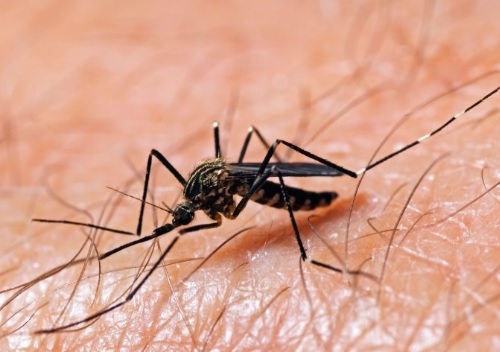
The firm called the spread of tropical diseases an “underappreciated consequence of global temperature rise,” and anticipates that exposure to diseases including Zika, dengue and yellow fever will rapidly increase over the coming decades.
“Warmer temperatures are likely to create more hospitable environments for disease transmission to occur,” the report warned.
The firm estimates that there will be an additional 385-725 million people at risk of infection by 2050, with that number rising to 1 billion by the year 2080.
Europe is expected to be the hardest-hit region, with 50% to 70% of the additional cases. The report says more temperate climates will “lengthen the transmission period and geographical range of vector-borne diseases.”
Not a disaster for everyone
There will be one big beneficiary from this trend: biopharma companies.
The market to treat these tropical diseases is currently valued at about $500 billion, according to estimates from the firm, and Morgan Stanley anticipates that an additional ”$125 billion in incremental vaccinations” will be needed to fight off the additional cases. If more complex vaccines are needed, that number could rise to $200 billion.
The firm anticipates that Sanofi and GlaxoSmithKline will be among the biggest winners since both companies “currently have pipelines against major tropical diseases,” as well as “large-scale manufacturing” operations and “drugs in development for malaria, dengue, Zika, and/or chikungunya.”
Merck also stands to gain since it’s “one of the largest vaccine manufacturers” with “extensive vaccines pipelines.”
While Pfizer and Johnson & Johnson-subsidiary Janssen aren’t developing vaccines for tropical diseases, the report notes that they could likely ramp up production if necessary. Pfizer has “significant development capabilities,” the analysts wrote, while Janssen “successfully developed vaccines for Ebola,” and also has “large-scale vaccine manufacturing capabilities.”
The report does note, however, that there are significant hurdles when it comes to vaccine development, such as “lengthy and costly development time lines” and “government budgets for national vaccination programs.”
The trend has already hit
Morgan Stanley’s warning might seem dire, but the impact of warmer temperatures on disease transmission is already being felt.
Today, for instance, dengue fever is present in more than 100 countries, according to estimates from the World Health Organization. In 1970, that number was just 9. “More accommodative climates, increased rainfall, and urbanization” are among the reasons cited for the resurgence.
But the impacts – and consequences – aren’t felt uniformly. Wealthy countries are often able to utilize wide-scale resources to stop the spread of disease. As Morgan Stanley notes, malaria was eradicated more than 60 years ago in the United States, thanks to efforts from the Centers for Disease Control. But nations that lack funding and have “comparatively poor economic infrastructures” aren’t able to take the necessary approach.
Up until now, rich countries have been “able to mitigate exposure to vector-borne diseases” and therefore “mask climate change effects on health,” but as mosquitoes breed faster and travel further distances, the diseases they carry will be that much more challenging to stamp out, the report said.
Vaccinations a sliver of the cost
The report touches on other economic impacts of a warming climate such as an uptick in natural disasters like hurricanes and fires.
Ultimately, the $200 billion spent on vaccinations will be just a drop in the bucket compared to the overall cost of environmental damage. In the next 20 years, if greenhouse emissions continue at the current rate, the Intergovernmental Panel on Climate Change estimates that $54 trillion worth of damage will have been done.